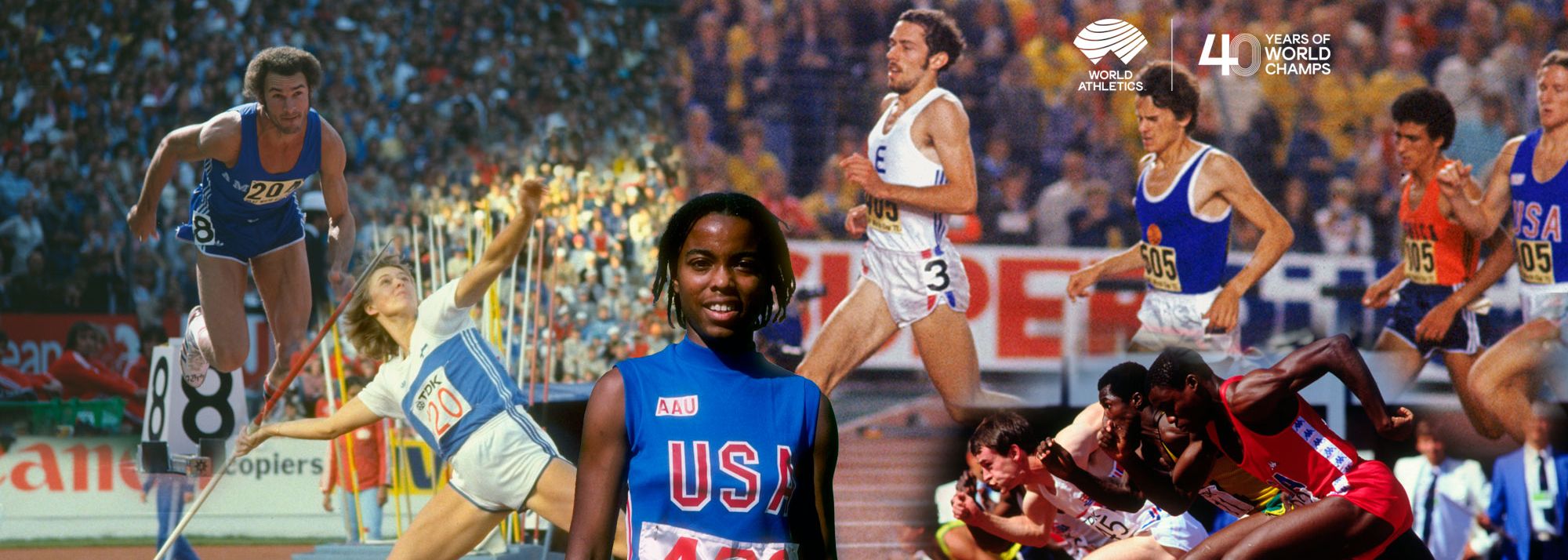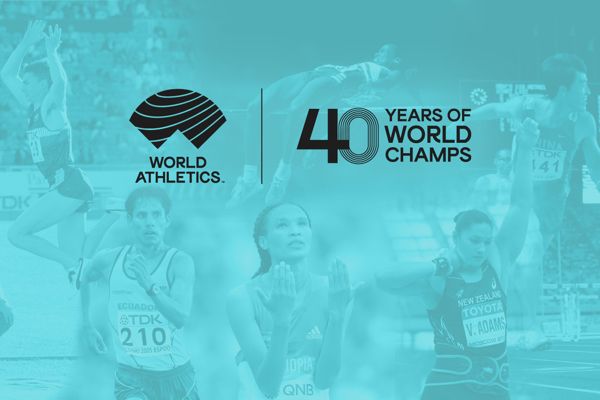Alberto Juantorena, Tiina Lillak, Evelyn Ashford, Steve Ovett and Carl Lewis (© Getty Images)
When the 2023 World Athletics Championships gets under way in Budapest on 19 August, the sport will celebrate the 40th anniversary of the first edition in Helsinki in 1983.
But without the work of a visionary Dutchman, the savvy of an English marketing man, and the drive of a dynamic Italian, in a time when a series of Olympic boycotts posed an existential threat, the World Athletics Championships may never have evolved to become the monument it is today.
It is hard to imagine the sporting calendar without the World Athletics Championships and much of the credit for initiating it goes to Adriaan Paulen, the Dutchman who was President of what was then the International Amateur Athletic Federation between 1976 and 1981.
“The vision of taking the sport out of a pure amateur status was his,” says Patrick Nally, a visionary sports marketer himself who worked closely with Paulen during his presidency.
After taking over from Britain’s 1928 Olympic 400m hurdles champion Lord Burghley, who had held the presidency for 30 years, Paulen set about widening the competitive horizons and commercial possibilities for his sport.
Paulen, who was born in 1902, was a 400m and 800m runner who competed in three Olympic Games between 1920 and 1928. He also competed eight times in the Monte Carlo Rally and played football at international level. After the Second World War he received the US Medal of Freedom and the Netherlands’ highest military honour for his deeds working for the resistance against the Nazi occupation.
As Nally recalls, Paulen – who died in 1985 – drew upon his wide sports experience to frame a new future for track and field.
“Seeing the development work in football, he wanted the same for athletics,” he explains. “He pioneered the World Cup of 1977 and the World Championships of 1983.”
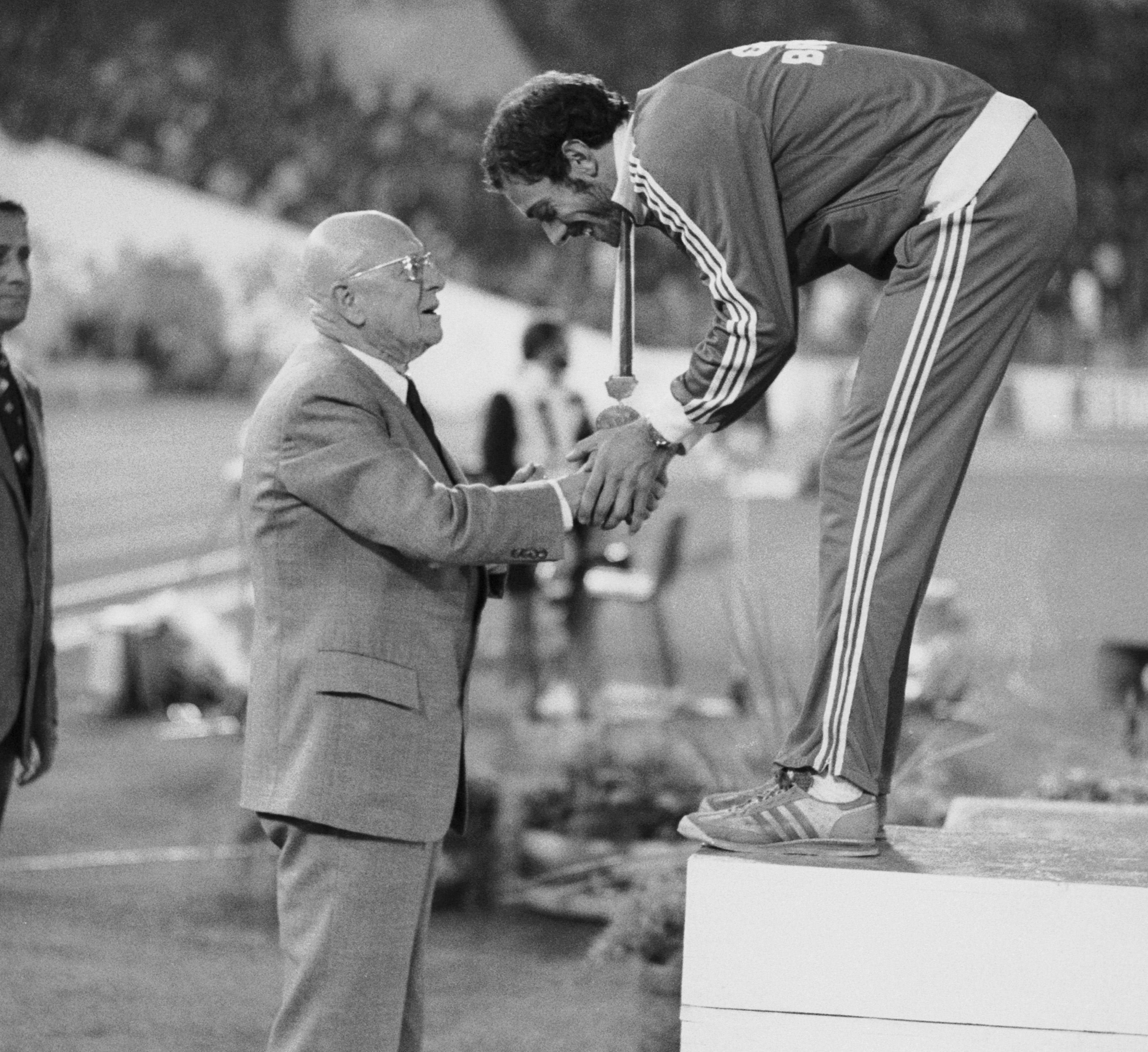
Adriaan Paulen awards Steve Ovett with his 1500m gold medal at the 1978 European Championships in Prague (© Getty Images)
Since 1913, the IAAF had regarded the Olympics as the world championships for athletics. But by the late 1960s a number of IAAF members were speculating about having their own global event, with Gavril Korobkov, President of the USSR Athletics Federations, being one of the early agitators. It was at the 1978 IAAF Council meeting in Puerto Rico that these ideas became a reality as Paulen convinced members to approve the idea of holding an athletics World Championships separately from the Olympic Games.
The first championships, set for 1983, were awarded at the 1980 IAAF Council meeting in Paris, where Helsinki – hosts of the 1952 Olympics – won the right after defeating Stuttgart by 11 votes to six.
Two IAAF world championship events preceded the 1983 edition of the World Championships.
The 1976 ‘World Championships’ consisted of one event, the men’s 50km race walk, which had been dropped from the Olympic programme for the Montreal Games. Four years later, the 1980 World Championships performed a similar function for two newly approved women’s events, the 400m hurdles and the 3000m, neither of which had yet made their way on to the Olympic programme in time for the 1980 Moscow Olympics.
Nally and BBC commentator Peter West founded the marketing company West Nally in 1969, and it went on to reshape the sports business industry by pioneering the offering to 'blue chip' companies of sponsorship rights to the world's largest sports tournaments on behalf of the organising federations - operating in partnership with FIFA, the International Olympic Committee and, from 1976, the IAAF.
A summary of early activity that stands on the West Nally website recalls that the team “worked closely with Adriaan to develop a wide range of athletics events.”
It adds: “In 1976 a document was prepared on The Track and Field World Cup and International Technical Aid programme. In 1978 the IAAF approved the draft rules for a first ever Athletics World Championships and West Nally got to work on planning the marketing and fundraising aspects.
“In 1981, Patrick Nally met with Dr Primo Nebiolo, who had taken over as IAAF President. Discussions on the first World Championships in Athletics were firmed-up and West Nally appointed to secure the funding, sponsors and television coverage.
“In 1983 this First World Athletics Championship in Helsinki became a reality.”
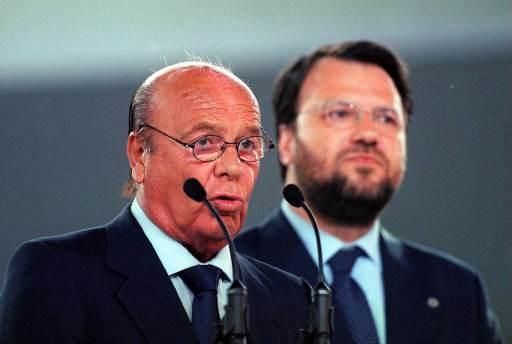
Primo Nebiolo (© Allsport / Getty Images)
As a forerunner of the sport’s global championships, the 1977 World Cup in Dusseldorf, from 2-4 September, proved to be a key event for the sport.
This contest between eight teams – Europe, East Germany, the United States, America, Africa, Oceania and Asia, with West Germany included in the men’s competition and the Soviet Union in the women’s – produced some memorable individual performances.
Most notably in the men’s 1500m, where Britain’s 21-year-old Steve Ovett – who had reached the Olympic semifinals the previous year in Montreal – destroyed a field that included the reigning Olympic champion John Walker of New Zealand. With one of the most electrifying bursts of acceleration ever witnessed in a middle distance race, Ovett won in the space of a few strides of the back straight.
Also compulsive viewing was the narrow victory in the men’s 800m of Cuba’s Olympic 400m and 800m champion Alberto Juantorena over Mike Boit, the Kenyan who had missed the 1976 Montreal Olympics because of his country’s boycott of the event.
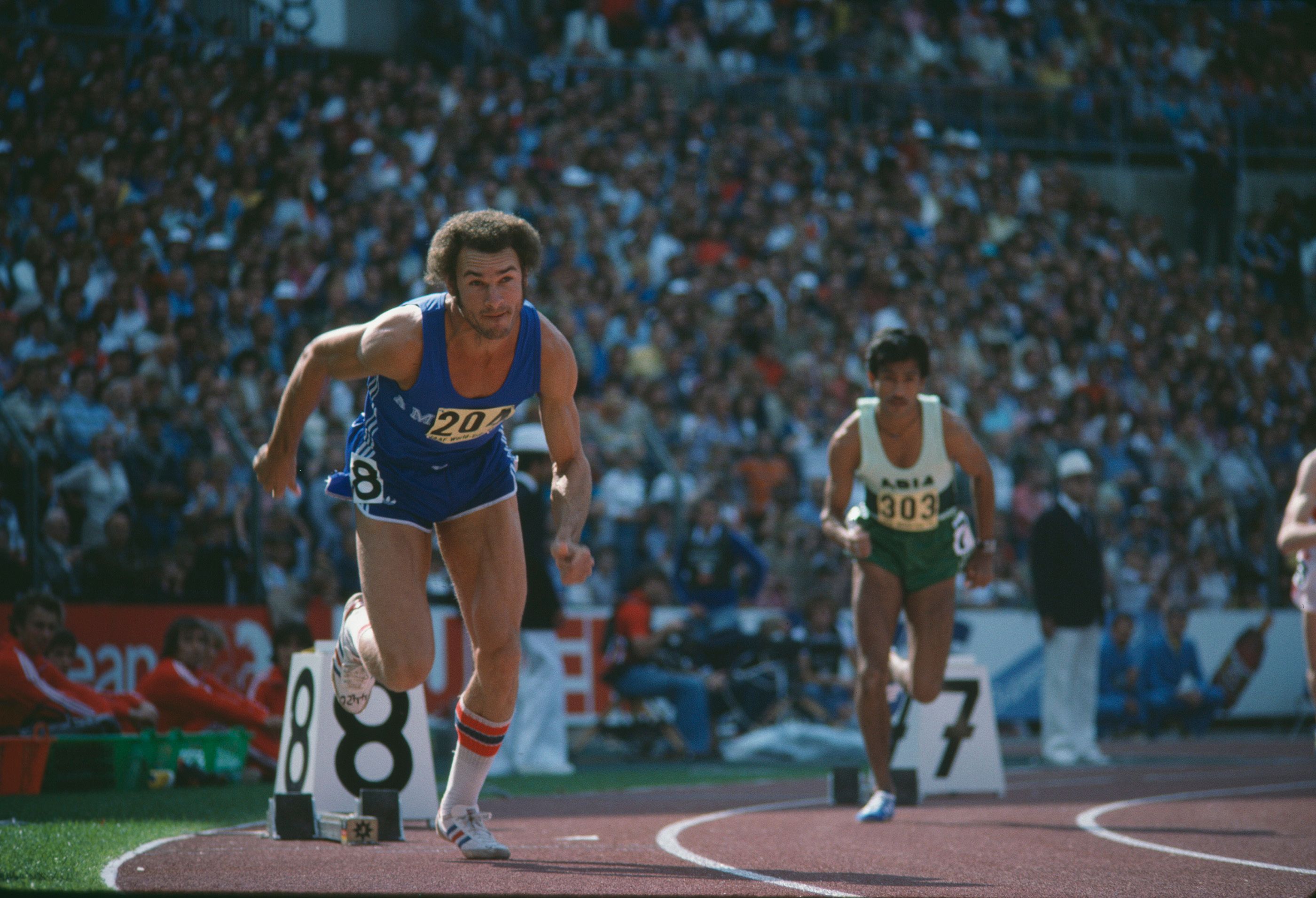
Alberto Juantorena at the 1977 World Cup event in Dusseldorf (© Getty Images)
Juantorena also raised the profile of the event by protesting against his third place in the 400m, where he successfully claimed he had not been able to hear the starting gun and had subsequently got away to a painfully slow start. The race was run again the following day, and this time the Cuban finished first.
Two years later the second IAAF World Cup took place in Montreal, again enabling athletes from the United States and the Soviet Union and eastern bloc to compete at time when international tensions over Afghanistan were about to prevent this happening at the Olympics.
The United States boycotted the Moscow 1980 Games and the eastern bloc nations did the same at the 1984 Los Angeles Games.
This World Cup edition also produced some superb highlights, including the 5000m and 10,000m double from Ethiopia’s Miruts Yifter – ‘Yifter the Shifter’, a peerless 400m hurdles performance from Ed Moses of the United States and a 100m victory for his compatriot Evelyn Ashford over East Germany’s Marlies Gohr.
“The 1977 World Cup in Dusseldorf was important because it was the start,” Nally says. “Obviously the Olympics were starting to be challenging because of what happened in Munich and what happened in Montreal, which didn’t go that well.
“So certainly Adriaan Paulen and others, but Paulen specifically, were aware that athletics had to adapt, to become more challenging with its own competitions as opposed just to the Olympics. Which led on the World Championships, of course.
“He realised that the sport couldn’t just stay totally amateur, so they needed more profile and more opportunity. The 1977 World Cup was the first step in creating new international events and because it went well, that led on to discussions about a world championship.”
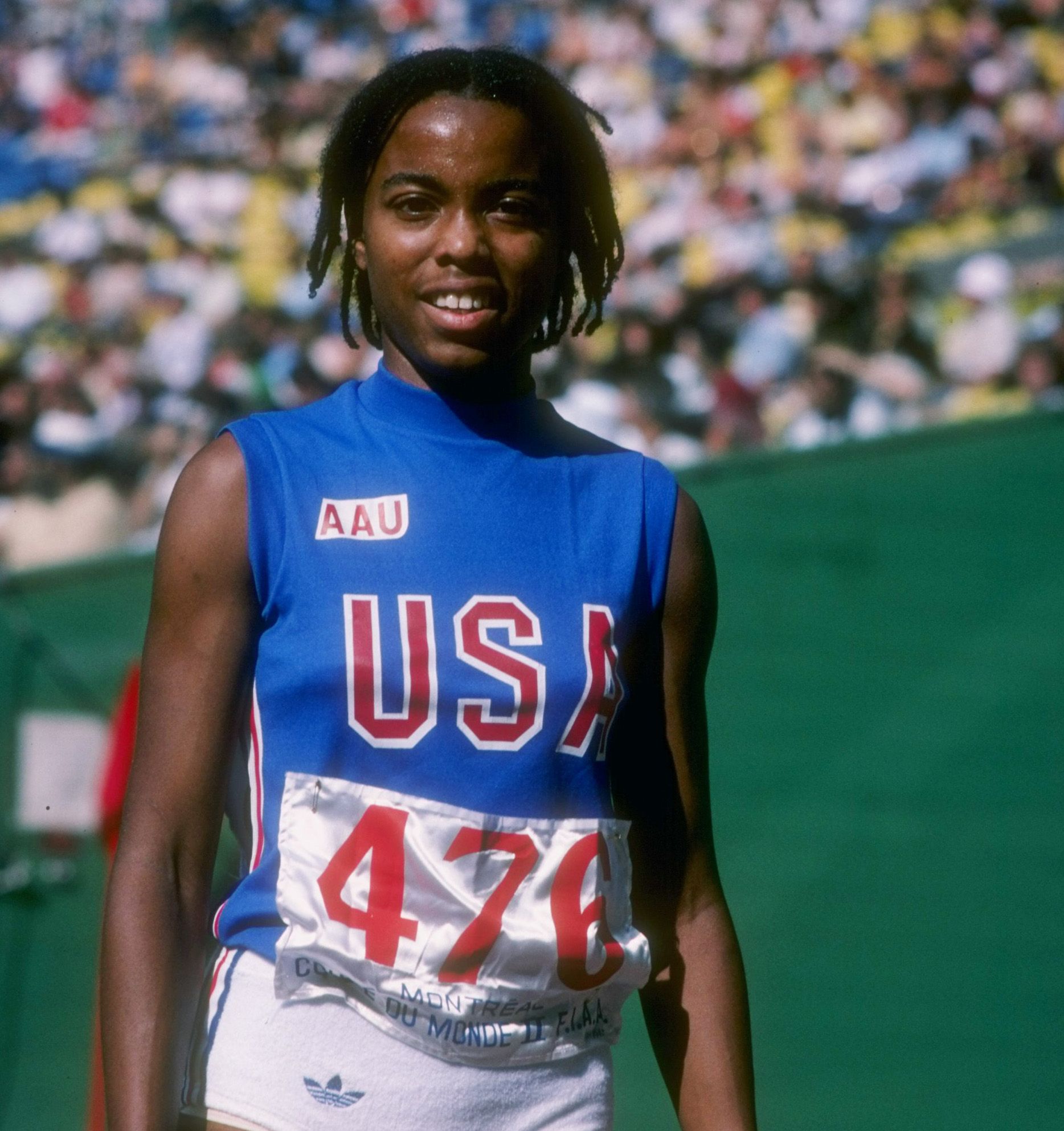
Evelyn Ashford at the 1979 World Cup in Montreal (© Getty Images)
In 1978 another Nally/Paulen innovation – the Golden Series – began, offering significant prize money at selected contests such as the Golden Mile, the Golden Pole Vault and the Golden Javelin, which were held around the world.
“It was all part of a plan with Paulen to create greater international attention and an awareness that these athletes might need to be paid,” Nally says. “We used the Golden Series to start evidencing the new open wave.
“I remember one particular occasion with Adriaan, sitting on a jumbo jet on the floor coming back from Tokyo having seen Steve Ovett win the Golden Mile, and we were writing out in 1978 all the regulations and structure of the World Championship, of the planned championships of 1983.”
The primary concerns in the lead-up to the 1983 World Championships were money and participation.
“Financially then things weren’t as they are now,” Nally recalls. “They were just starting in terms of sponsorship because we had created an exclusive approach to a limited number of sponsors for events. So, there was a problem with money, because it needed money to fund the event.
“The Finnish organisers obviously couldn’t take on all the responsibility so we had to come up with a plan that would give at least a minimum amount of finance to the organisers. Which was then built on us doing a commercial sponsorship programme similar to the one West Nally was then doing with FIFA for the 1978 World Cup finals in Argentina, and which we went on to do at the 1982 World Cup finals in Spain.
“We put together a package of sponsors very much driven by Japan – TDK and Seiko (still partners of the World Athletics Championships today) became some of our early big supporters.
“Obviously the finance was important. And so was the establishment of getting international participation, making sure of the United States, and therefore getting a good TV broadcaster, which we did with NBC.
“It was important to get all the key nations to support it, to back it, because potentially it was being looked upon as a possible replacement for the Olympics if they continued to have the dramas and boycotts they were facing,” he adds.
“The fact that the organising committee in Finland was absolutely dedicated, with great athletics knowledge and having good facilities, made it easier. But it was the first time ever, so we were writing the rules from a clean sheet of paper because it had never been done before.”
In the end, 1333 athletes from 153 countries participated in those inaugural Championships. And they produced some unforgettable athletics memories.
Carl Lewis won the men’s 100m and long jump titles before anchoring the United States to 4x100m gold in a world record of 37.86.
For home fans, with their historic love of the javelin event, there was the thrill of seeing Tiina Lillak claim the women’s title with her sixth and final effort.

Javelin winner Tiina Lillak at the 1983 World Championships in Helsinki (© Getty Images)
Eamonn Coghlan of Ireland won the 5000m title in exhilarating fashion, unable to hide his gathering glee as he took the lead on the back straight. While Britain’s 22-year-old Steve Cram claimed the 1500m title ahead of such talents as Said Aouita, Steve Scott and Ovett.
“It was extraordinarily exciting,” Nally recalls. “Because this championship had never happened before. I was sitting in the stands with very knowledgeable Americans and Swiss and eastern European observers, and the buzz of seeing a meeting of that calibre for the first time outside an Olympics was amazing.
“I would probably put it as one of the most rewarding events I had the privilege of being involved with from the beginning.”
Also there from the beginning was Olaf Brockmann, a journalist who attended the event in Helsinki for German news agency Sport-Informations-Dienst. He has reported from every World Athletics Championships since.
“The atmosphere in the city and stadium made the World Championships in Helsinki an unforgettable experience for me,” he says. “To this day, the 1983 World Championships – probably also because it was the premiere – remains one of my favourite World Championships in athletics.
“The event was my farewell as editor of the Sport-Informations-Dienst. The crowning journalistic farewell gift for me was Willi Wulbeck's sensational victory in the 800m in the German record time of 1:43.65. I can still clearly see his storming run on the home straight to gold, and the subsequent shouts of "Williii, Williii" that echoed from a bend after his victory are still ringing in my ears today.”
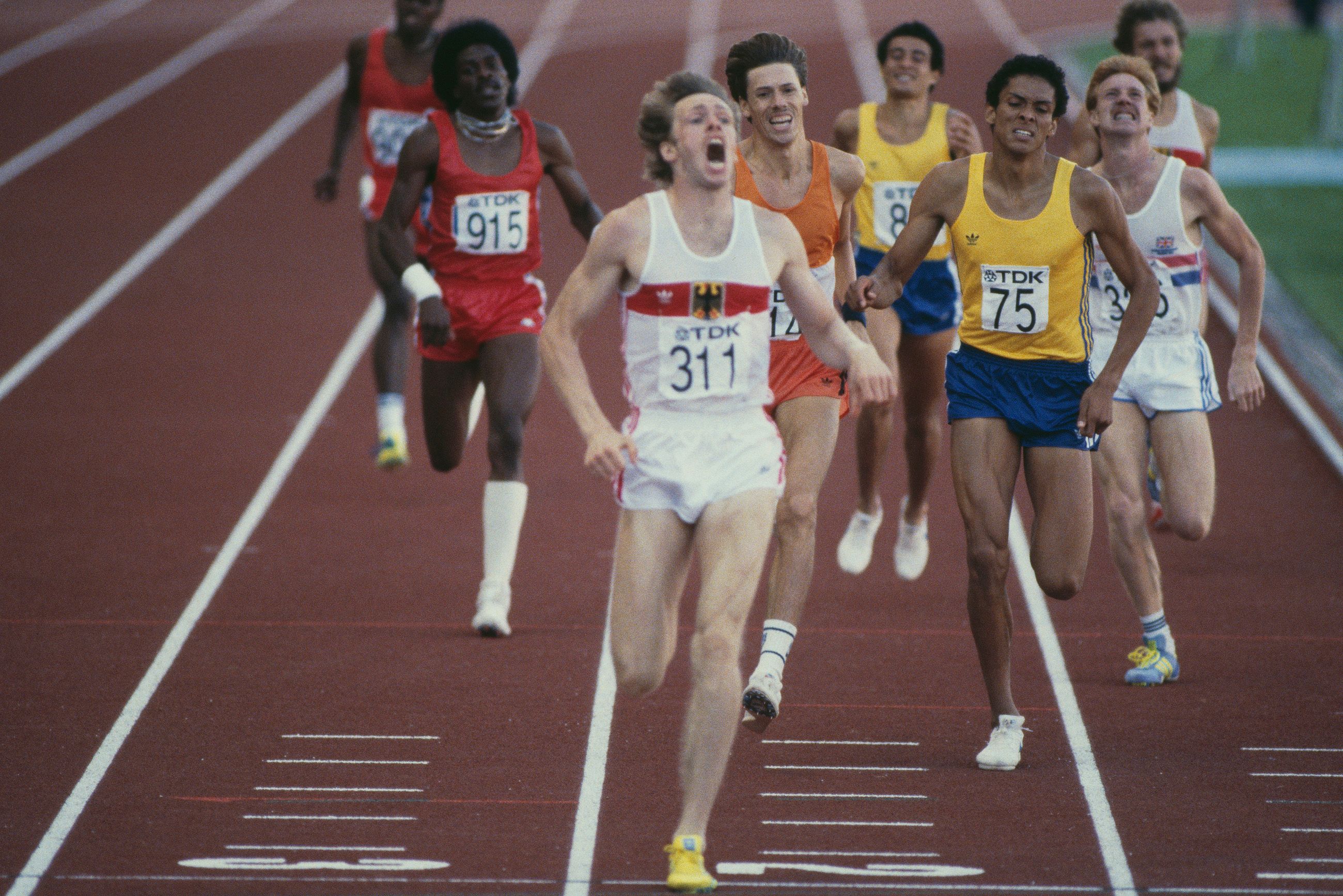
Willi Wulbeck wins the 1983 world 800m title in Helsinki (© Getty Images)
Wulbeck has since donated one of the spikes he wore in that 1983 final to the Museum of World Athletics.
“One of the most beautiful highlights in the history of the World Championships also took place in Helsinki: Tiina Lillak won gold for Finland in the javelin throw with 70.82m in her last attempt,” Brockmann adds. “The cheers of the 55,000 spectators and the sea of blue and white flags in the stands will remain in my memory.”
The IAAF promised to pay all travelling expenses for the first World Championships. Writing in the editorial of IAAF Bulletin No 1 for 1983, Nebiolo said: "1983 is a year of vital importance to the IAAF, a dream long held by track and field fans everywhere will become a reality - the world's best athletes brought together in one of the most historic stadiums.”
In Bulletin No 2, Nebiolo commented: "The decision to choose Helsinki has proved to be a judicious one. The world championships 1983 is yet another significant step in our growth which I am confident will be remembered as a significant landmark of our heritage in future years."
In Bulletin No 3, Nebiolo added: "The world athletics championships was the biggest single step forward ever made by the IAAF.”
David Miller, for many years chief sports writer for The Times, and for 20 years an official historian of the International Olympic Committee, credits Nebiolo for having the drive and dynamism to keep athletics on its own path of destiny once he took up the presidency in 1981.
“For all his postures, Nebiolo did a huge amount to advance the status and reputation of track and field,” Miller says.
“Under his direction, athletics unquestionably advanced more than at any time you could say in its history in terms of its programme of events.
“One of the landmarks in my recollection was the World Championships in Rome in 1987, which was spectacular. That was a golden age of athletics in terms of personalities when you had performers such as Sergey Bubka and Carl Lewis around.”
With two successful editions of the fledgling event completed, the World Athletics Championships had the foundation to fly, and 40 years later it has become one of the biggest sports events in the world.
Mike Rowbottom for World Athletics


